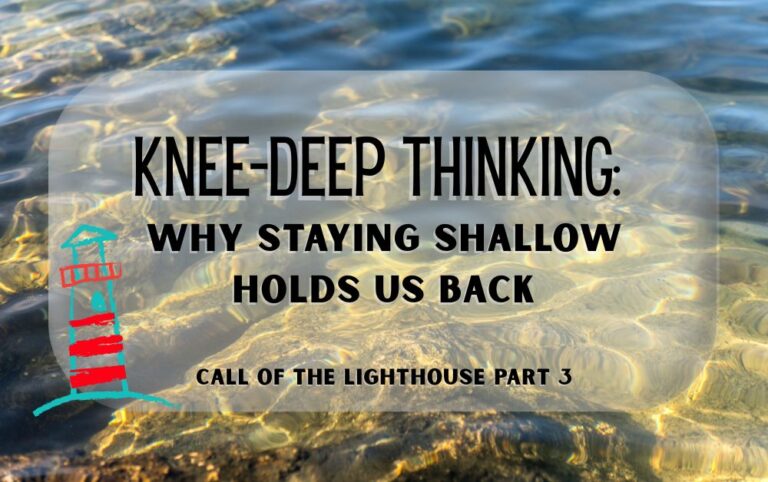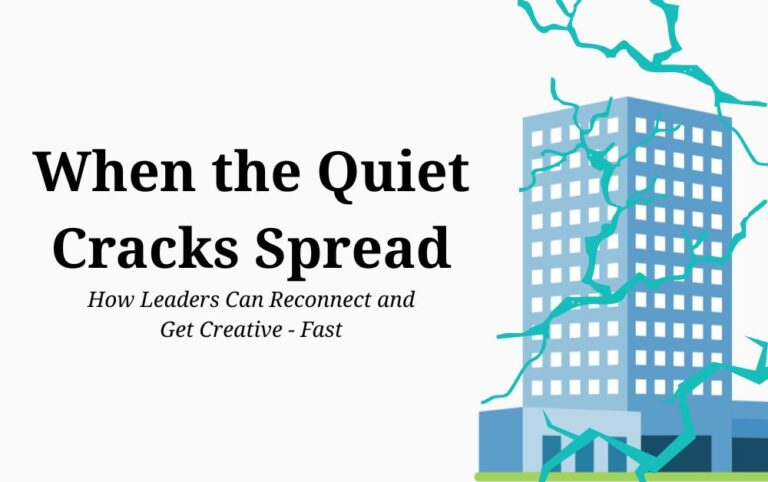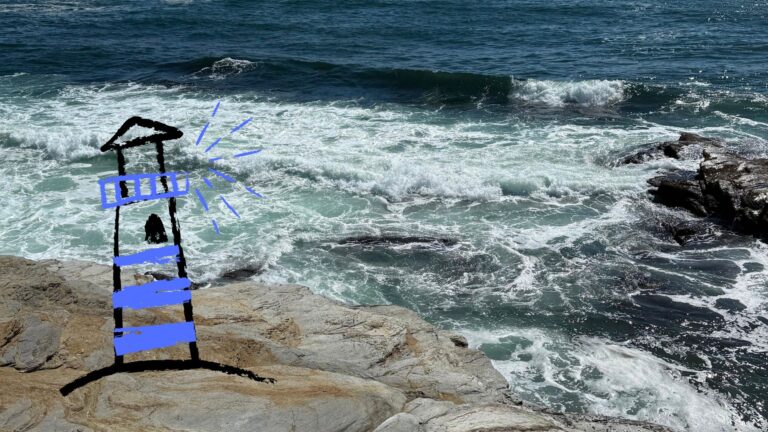
Knee-Deep Thinking: Why Staying Shallow Holds Us Back
Safe feels easy, but the real growth happens when we wade deeper.

We’re drowning in information and starving for wisdom. Headlines shout. Feeds refresh. Opinions clash. And in the chaos, too many of us skim the surface. We are reacting instead of reflecting, scrolling instead of thinking. Surface-level thinking might keep us afloat, but it won’t keep us safe. In fact, it leaves us drifting, pulled by currents we don’t even notice.
That truth hit me recently as I stood on the jagged rocks of New England’s coastline, the wind tugging at my jacket, the waves hammering the shore. I had come to see a lighthouse, but what I found was something more—a moment of clarity. As the spray caught the sunlight, I felt my shoulders drop, my breath slow, and a quiet calm wash over me.
The lighthouse I was looking at was Beavertail Lighthouse in Jamestown, Rhode Island, the third-oldest lighthouse in the United States. Built in 1749, it has endured centuries of storms, guiding sailors through darkness and danger. Reading about its history, the keepers who lived and died there, the ships saved from wreckage, I realized this wasn’t just a piece of brick and stone. It was a metaphor.
One plaque nearby put it perfectly:
“A lighthouse symbolizes strength, safety, guidance, and salvation — a light in the darkness. It is a symbol of humanity, and the keepers are legendary for courage and sacrifice.” — David S. Robinson
In that moment, I knew: a lighthouse is more than a landmark. It’s a way of thinking—and a way of leading. Just as a lighthouse stands firm against storms, we too must stand firm as guides, helping others think deeply rather than drift on the surface. Storms will come. Obstacles will rise. But true leaders, whether in classrooms, boardrooms, or communities, become the guiding lights others can depend on.

Honestly, we need those lights now more than ever. We live in an age of information overload, distraction, and shortcuts. Waves of misinformation crash against us daily, while jagged rocks of political division split us apart. In such a world, lighthouse thinkers, those who ground themselves in wisdom, curiosity, and clear judgment, are not optional. They are essential to our survival..
This eight-part series is my invitation to you: to explore what surface, shallow, and deep thinking are; why they matter; and how we can each become lighthouses in a world clouded with noise.
So, let’s get thinking. Why does deep thinking matter, and why is staying in surface waters for too long more dangerous than it seems?
Before we sail further, let’s map the waters.
Surface thinking is the mental equivalent of treading water—you’re staying afloat, but you’re not really going anywhere. In school, it looks like cramming for a test the night before, memorizing just enough to spit back the answers, and forgetting it all by Monday. In the workplace, it’s the person who preps for a meeting by memorizing bullet points instead of understanding the project. They can recite the stats, but if someone asks why the numbers matter, the ship sinks fast.
Shallow thinking dips a little deeper. Imagine you’re wading knee-deep in the water, splashing around, but still close enough to shore to feel safe. In school, this might be the student who writes a book report that summarizes the plot, names a theme, and stops there. In the office, it’s the team that meets, shares updates, connects a few dots, and then walks away with the same assumptions they started with. Shallow thinking feels productive because it connects facts, but it rarely challenges them.
Deep thinking is the dive. This is where the real discovery happens. In school, it’s the student who doesn’t just summarize a novel but asks, Why does this story still matter today? What if the ending were different? How does it challenge what I believe? In the workplace, it’s the leader who doesn’t just scan quarterly numbers but digs into the why behind trends, asks what if about the future, and considers how decisions ripple through the team.
Our brains love shortcuts. Left on autopilot, we slide into surface and shallow thinking because it feels quicker, safer, and way less work. But here’s the thing: when we are courageous enough to wade into deeper waters by asking more complex questions, sitting with the discomfort of not knowing, or connecting ideas that don’t seem related at first, we awaken the parts of our brain built for curiosity, creativity, and wisdom. That’s where thinking sticks, grows, and actually changes us and or society.
So yes, the lighthouse metaphor sounds poetic, but it’s also wildly practical. We can drift along the surface, letting the currents decide for us. Or we can dive deep, discover something worth holding onto, and maybe even shine a beam of light for someone else who’s trying to find their way. That’s where the real treasure lies.
Why This Matters
Our brains love shortcuts, so it’s easy to stay at the surface. But if we want clarity in chaos, we need to wade deeper. Lighthouses exist because lives depend on them. In the same way, deep thinking isn’t optional—it’s what keeps us from drifting into poor decisions, shallow habits, and noisy distractions.
Next time, we’ll dive into exactly why deep thinking matters, the risks of staying on the surface, and how you can begin building your own lighthouse.
To be continued…
References
Craik, F. I. M., & Lockhart, R. S. (1972). Levels of processing: A framework for memory research. Journal of Verbal Learning and Verbal Behavior, 11(6), 671–684. https://doi.org/10.1016/S0022-5371(72)80001-X
Robinson, D. S. (n.d.). Lighthouse symbolism quote. Plaque at Beavertail Lighthouse Museum, Jamestown, Rhode Island.
Svedholm-Häkkinen, A. M. (2023). Deep versus shallow processing and memory performance. Frontiers in Psychology, 14, 1065323. https://doi.org/10.3389/fpsyg.2023.1065323
Share Post:

Safe feels easy, but the real growth happens when we wade deeper.

I can still picture it—walking through my northwest Chicago neighborhood with friends,

A lighthouse doesn’t shine just for decoration; it exists because lives depend